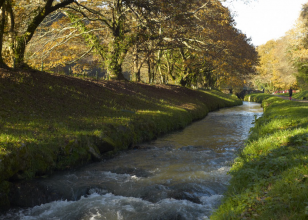Loading map...
{"format":"googlemaps3","type":"HYBRID","minzoom":false,"maxzoom":false,"types":["ROADMAP","SATELLITE","HYBRID","TERRAIN"],"limit":50,"offset":0,"link":"all","sort":[""],"order":[],"headers":"show","mainlabel":"","intro":"","outro":"","searchlabel":"... further results","default":"","import-annotation":false,"width":"auto","height":"400px","centre":false,"title":"","label":"","icon":"","lines":[],"polygons":[],"circles":[],"rectangles":[],"copycoords":false,"static":false,"visitedicon":"","wmsoverlay":false,"zoom":false,"layers":[],"controls":["pan","zoom","type","scale","streetview","rotate"],"zoomstyle":"DEFAULT","typestyle":"DEFAULT","autoinfowindows":false,"resizable":false,"kmlrezoom":false,"poi":true,"cluster":false,"clustergridsize":60,"clustermaxzoom":20,"clusterzoomonclick":true,"clusteraveragecenter":true,"clusterminsize":2,"imageoverlays":[],"kml":[],"gkml":[""],"searchmarkers":"","fullscreen":false,"scrollwheelzoom":false,"showtitle":false,"hidenamespace":true,"template":"Location map popup","userparam":"","activeicon":"","pagelabel":false,"ajaxcoordproperty":"","ajaxquery":"","locations":[{"text":"\u003Cp\u003E\u003Cbr /\u003E\n\u003C/p\u003E\u003Cp\u003E\u003Cb\u003EProject Title:\u003C/b\u003E The South Cornwall River Improvement Project\n\u003C/p\u003E\u003Cp\u003E\u003Cb\u003ECountry:\u003C/b\u003E \u003Ca href=\"/wiki/index.php?title=England\" title=\"England\"\u003EEngland\u003C/a\u003E\n\u003C/p\u003E\u003Cp\u003E\u003Cb\u003EProject Status:\u003C/b\u003E In progress\n\u003C/p\u003E\u003Cp\u003E\u003Cb\u003EThemes:\u003C/b\u003E Water quality\n\u003C/p\u003E\u003Cp\u003E\u003Cbr /\u003E\n\u003C/p\u003E","title":"The South Cornwall River Improvement Project","link":"","lat":50.160185037092,"lon":-5.3462219238281,"icon":"/wiki/images/c/ce/Green_marker.png"},{"text":"\u003Cp\u003E\u003Cbr /\u003E\n\u003C/p\u003E\u003Cp\u003E\u003Cb\u003EProject Title:\u003C/b\u003E The South Cornwall River Improvement Project - Mevagissey River\n\u003C/p\u003E\u003Cp\u003E\u003Cb\u003ECountry:\u003C/b\u003E \u003Ca href=\"/wiki/index.php?title=England\" title=\"England\"\u003EEngland\u003C/a\u003E\n\u003C/p\u003E\u003Cp\u003E\u003Cb\u003EProject Status:\u003C/b\u003E In progress\n\u003C/p\u003E\u003Cp\u003E\u003Cb\u003EThemes:\u003C/b\u003E Water quality\n\u003C/p\u003E\u003Cp\u003E\u003Cbr /\u003E\n\u003C/p\u003E","title":"The South Cornwall River Improvement Project - Mevagissey River","link":"","lat":50.274201511848,"lon":-4.8058319091797,"icon":"/wiki/images/a/af/Red_marker.png"},{"text":"\u003Cp\u003E\u003Cbr /\u003E\n\u003C/p\u003E\u003Cp\u003E\u003Cb\u003EProject Title:\u003C/b\u003E The South Cornwall River Improvement Project - River Par\n\u003C/p\u003E\u003Cp\u003E\u003Cb\u003ECountry:\u003C/b\u003E \u003Ca href=\"/wiki/index.php?title=England\" title=\"England\"\u003EEngland\u003C/a\u003E\n\u003C/p\u003E\u003Cp\u003E\u003Cb\u003EProject Status:\u003C/b\u003E In progress\n\u003C/p\u003E\u003Cp\u003E\u003Cb\u003EThemes:\u003C/b\u003E Water quality\n\u003C/p\u003E\u003Cp\u003E\u003Cbr /\u003E\n\u003C/p\u003E","title":"The South Cornwall River Improvement Project - River Par","link":"","lat":50.360575479586,"lon":-4.7024917602539,"icon":"/wiki/images/a/af/Red_marker.png"},{"text":"\u003Cp\u003E\u003Cbr /\u003E\n\u003C/p\u003E\u003Cp\u003E\u003Cb\u003EProject Title:\u003C/b\u003E The South Cornwall River Improvement Project - St. Austell\n\u003C/p\u003E\u003Cp\u003E\u003Cb\u003ECountry:\u003C/b\u003E \u003Ca href=\"/wiki/index.php?title=England\" title=\"England\"\u003EEngland\u003C/a\u003E\n\u003C/p\u003E\u003Cp\u003E\u003Cb\u003EProject Status:\u003C/b\u003E In progress\n\u003C/p\u003E\u003Cp\u003E\u003Cb\u003EThemes:\u003C/b\u003E Water quality\n\u003C/p\u003E\u003Cp\u003E\u003Cbr /\u003E\n\u003C/p\u003E","title":"The South Cornwall River Improvement Project - St. Austell","link":"","lat":50.33187464594,"lon":-4.8006820678711,"icon":"/wiki/images/a/af/Red_marker.png"},{"text":"\u003Cp\u003E\u003Cbr /\u003E\n\u003C/p\u003E\u003Cp\u003E\u003Cb\u003EProject Title:\u003C/b\u003E The South Cornwall River Improvement Project \u2013 Bokiddicks Stream\n\u003C/p\u003E\u003Cp\u003E\u003Cb\u003ECountry:\u003C/b\u003E \u003Ca href=\"/wiki/index.php?title=England\" title=\"England\"\u003EEngland\u003C/a\u003E\n\u003C/p\u003E\u003Cp\u003E\u003Cb\u003EProject Status:\u003C/b\u003E In progress\n\u003C/p\u003E\u003Cp\u003E\u003Cb\u003EThemes:\u003C/b\u003E Water quality\n\u003C/p\u003E\u003Cp\u003E\u003Cbr /\u003E\n\u003C/p\u003E","title":"The South Cornwall River Improvement Project \u2013 Bokiddicks Stream","link":"","lat":50.425690440128,"lon":-4.7488403320312,"icon":"/wiki/images/a/af/Red_marker.png"},{"text":"\u003Cp\u003E\u003Cbr /\u003E\n\u003C/p\u003E\u003Cp\u003E\u003Cb\u003EProject Title:\u003C/b\u003E The South Cornwall River Improvement Project \u2013 Crinnis\n\u003C/p\u003E\u003Cp\u003E\u003Cb\u003ECountry:\u003C/b\u003E \u003Ca href=\"/wiki/index.php?title=England\" title=\"England\"\u003EEngland\u003C/a\u003E\n\u003C/p\u003E\u003Cp\u003E\u003Cb\u003EProject Status:\u003C/b\u003E In progress\n\u003C/p\u003E\u003Cp\u003E\u003Cb\u003EThemes:\u003C/b\u003E Water quality\n\u003C/p\u003E\u003Cp\u003E\u003Cbr /\u003E\n\u003C/p\u003E","title":"The South Cornwall River Improvement Project \u2013 Crinnis","link":"","lat":50.359918402646,"lon":-4.8003387451172,"icon":"/wiki/images/a/af/Red_marker.png"},{"text":"\u003Cp\u003E\u003Cbr /\u003E\n\u003C/p\u003E\u003Cp\u003E\u003Cb\u003EProject Title:\u003C/b\u003E The South Cornwall River Improvement Project \u2013 Gorran Stream\n\u003C/p\u003E\u003Cp\u003E\u003Cb\u003ECountry:\u003C/b\u003E \u003Ca href=\"/wiki/index.php?title=England\" title=\"England\"\u003EEngland\u003C/a\u003E\n\u003C/p\u003E\u003Cp\u003E\u003Cb\u003EProject Status:\u003C/b\u003E In progress\n\u003C/p\u003E\u003Cp\u003E\u003Cb\u003EThemes:\u003C/b\u003E Water quality\n\u003C/p\u003E\u003Cp\u003E\u003Cbr /\u003E\n\u003C/p\u003E","title":"The South Cornwall River Improvement Project \u2013 Gorran Stream","link":"","lat":50.293726104507,"lon":-4.8545837402344,"icon":"/wiki/images/a/af/Red_marker.png"},{"text":"\u003Cp\u003E\u003Cbr /\u003E\n\u003C/p\u003E\u003Cp\u003E\u003Cb\u003EProject Title:\u003C/b\u003E The South Cornwall River Improvement Project \u2013 Polmear stream\n\u003C/p\u003E\u003Cp\u003E\u003Cb\u003ECountry:\u003C/b\u003E \u003Ca href=\"/wiki/index.php?title=England\" title=\"England\"\u003EEngland\u003C/a\u003E\n\u003C/p\u003E\u003Cp\u003E\u003Cb\u003EProject Status:\u003C/b\u003E In progress\n\u003C/p\u003E\u003Cp\u003E\u003Cb\u003EThemes:\u003C/b\u003E Water quality\n\u003C/p\u003E\u003Cp\u003E\u003Cbr /\u003E\n\u003C/p\u003E","title":"The South Cornwall River Improvement Project \u2013 Polmear stream","link":"","lat":50.352470894937,"lon":-4.669189453125,"icon":"/wiki/images/a/af/Red_marker.png"},{"text":"\u003Cp\u003E\u003Cbr /\u003E\n\u003C/p\u003E\u003Cp\u003E\u003Cb\u003EProject Title:\u003C/b\u003E The South Cornwall River Improvement Project \u2013 Portmellon Stream\n\u003C/p\u003E\u003Cp\u003E\u003Cb\u003ECountry:\u003C/b\u003E \u003Ca href=\"/wiki/index.php?title=England\" title=\"England\"\u003EEngland\u003C/a\u003E\n\u003C/p\u003E\u003Cp\u003E\u003Cb\u003EProject Status:\u003C/b\u003E In progress\n\u003C/p\u003E\u003Cp\u003E\u003Cb\u003EThemes:\u003C/b\u003E Water quality\n\u003C/p\u003E\u003Cp\u003E\u003Cbr /\u003E\n\u003C/p\u003E","title":"The South Cornwall River Improvement Project \u2013 Portmellon Stream","link":"","lat":50.2601564044,"lon":-4.7893524169922,"icon":"/wiki/images/a/af/Red_marker.png"},{"text":"\u003Cp\u003E\u003Cbr /\u003E\n\u003C/p\u003E\u003Cp\u003E\u003Cb\u003EProject Title:\u003C/b\u003E The South Cornwall River Improvement Project \u2013 Warleggan\n\u003C/p\u003E\u003Cp\u003E\u003Cb\u003ECountry:\u003C/b\u003E \u003Ca href=\"/wiki/index.php?title=England\" title=\"England\"\u003EEngland\u003C/a\u003E\n\u003C/p\u003E\u003Cp\u003E\u003Cb\u003EProject Status:\u003C/b\u003E In progress\n\u003C/p\u003E\u003Cp\u003E\u003Cb\u003EThemes:\u003C/b\u003E Water quality\n\u003C/p\u003E\u003Cp\u003E\u003Cbr /\u003E\n\u003C/p\u003E","title":"The South Cornwall River Improvement Project \u2013 Warleggan","link":"","lat":50.078294547389,"lon":-5.625,"icon":"/wiki/images/a/af/Red_marker.png"}]}


